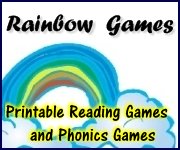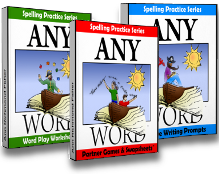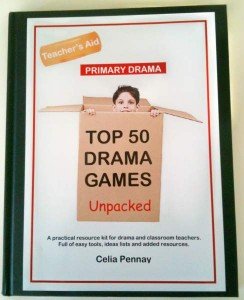The Elements of Persuasive Writing: Teach with Fun Persuasive Writing Activities
The elements of persuasive writing are best introduced with fun, hands-on persuasive writing activities. Explore the elements of persuasion creatively with the following ideas guaranteed to tease your students' thinking.The major elements of persuasive writing include stating opinions, using supporting examples, connecting ideas with logic and reasoning, and appealing to a target audience.
Let's look at creative writing lesson plans that incorporate enjoyable persuasive writing activities. We'll start with the first of the elements of persuasive writing on our list: stating opinions.
Activity One: The Villains Speak!
Through this persuasive writing activity, your students will expand their abilities to consider other opinions and points of view. Together, list some well-known villains from fairy tales, such as the witch who imprisoned Rapunzel or Cinderella's stepsisters. As a class, choose a villain from the list and compose a paragraph for the board that explains part of the story from the villain's viewpoint. Here's an example, written from the view of one of Cinderella'a stepsisters:
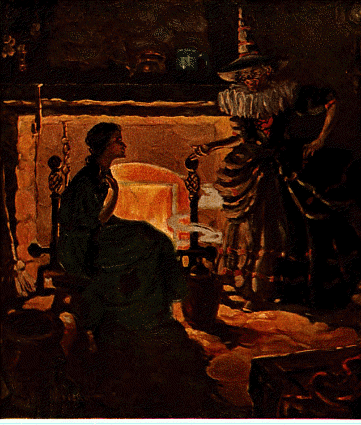 I don't know why everyone gets upset because we ask Cinderella to help with chores around the manor! She grew up here anyway, and she knows how to run a country estate! My sister and I are from the city, and we don't know how to churn butter, scrub floors, or groom horses! We never learned how to do those things! Why shouldn't Cinderella help out?
I don't know why everyone gets upset because we ask Cinderella to help with chores around the manor! She grew up here anyway, and she knows how to run a country estate! My sister and I are from the city, and we don't know how to churn butter, scrub floors, or groom horses! We never learned how to do those things! Why shouldn't Cinderella help out?
Encourage your class to discuss how this different viewpoint helps them to see an old tale in a fresh way. Now, ask each child to select another villain from another fairy tale and create a segment of the story told in that character's opinion. Invite students to share their work with classmates. How might this new viewpoint add to an understanding of the plot?
Now, let's try the second of our persuasive writing activities. Of the elements of persuasive writing, this creative writing activity gives your students practice in using supportive examples.
Activity Two: Character Campaign
Through this activity, students learn to systematically present and defend an opinion. Gather collections of fables, fairy tales, tall tales, folk tales, myths, and legends, and discuss these familiar plots and characters with your students. Then, select several personal qualities and suggest characters who might represent these qualities. For example, Scary could be personified by Snow White's stepmother or the witch in Hansel and Gretel. King Midas or Rumpelstiltskin might personify Greedy. Now have each student select a quality with its corresponding character and write a persuasive campaign-style paragraph. Remind students to use examples and incidents from the tales to support their choices. Here's an example:
Why You Should Vote for King Midas as Greediest!
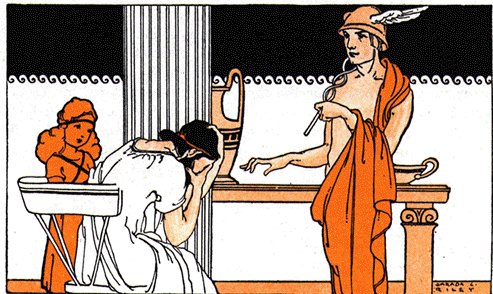 King Midas is a greedy character, because he had the opportunity to ask the enchantress for the ability to become a just and wise ruler. Instead, when asked what he wished for more than anything else in the world, he asked that everything he touched turn to gold. And King Midas was already a very wealthy king! His love of riches was such that he was never satisfied. By asking for this power, he put his greed ahead of his own family. When he hugged his young daughter, she became a golden statue. King Midas sacrificed his only child for his greed. That's why you should vote for King Midas as the greediest legendary character!
King Midas is a greedy character, because he had the opportunity to ask the enchantress for the ability to become a just and wise ruler. Instead, when asked what he wished for more than anything else in the world, he asked that everything he touched turn to gold. And King Midas was already a very wealthy king! His love of riches was such that he was never satisfied. By asking for this power, he put his greed ahead of his own family. When he hugged his young daughter, she became a golden statue. King Midas sacrificed his only child for his greed. That's why you should vote for King Midas as the greediest legendary character!
Have the class read their paragraphs aloud and discuss the persuasiveness of their arguments. Which paragraphs are most persuasive and why?
Ready to try the third of our persuasive writing activities? Of the elements of persuasive writing, this creative writing activity gives your students practice in connecting ideas with logic and reasoning.
Activity Three: What are Your Reasons?
This writing activity helps your class understand how logical, convincing arguments grow out of carefully assembling the supporting facts. On the board, present the first and last sentences (the statement of opinion and the conclusion) of a persuasive paragraph on a familiar topic. Leave plenty of space between these sentences. Together, develop and write supporting facts and reasons that lead, step-by-step, from the opening statement to the conclusion. Here's an example:
 Animal shelters are overcrowded because of irresponsible pet owners. A family may adopt a dog or cat without considering the care and training the animal requires. Or an owner may neglect spaying or neutering a pet and then be faced with an unwelcomed litter of puppies or kittens. As a result, both adult animals and young ones are brought to shelters. Many abandoned pets are euthanized due to the thoughtlessness of their owners.
Animal shelters are overcrowded because of irresponsible pet owners. A family may adopt a dog or cat without considering the care and training the animal requires. Or an owner may neglect spaying or neutering a pet and then be faced with an unwelcomed litter of puppies or kittens. As a result, both adult animals and young ones are brought to shelters. Many abandoned pets are euthanized due to the thoughtlessness of their owners.
Now have your students apply what they've learned about logical reasoning to their own persuasive paragraphs. Topics to consider might be adopting healthy diets, getting regular exercise, or the importance of environmental stewardship.
Now let's move on to the last of our persuasive writing activities. Of the elements of persuasive writing, this creative writing activity gives your students practice in appealing to a target audience.
Activity Four: Analyzing Different Viewpoints
Although the primary goal of persuasive writing is to bring an "undecided" audience around to the writer's viewpoint, a secondary goal (and more difficult to achieve) is to convince a "decided" audience audience to "switch sides." In this case, the first step is to understand why the target audience holds that opinion. With your class, make a list of debatable questions. Here are some examples:
- Should schools have a no-homework policy?
- Should all students be required to learn a foreign language?
- Should students be allowed to skip grade levels if their school work is exceptional?
Now discuss what it means to be objective: to consider all the angles that relate to a topic without stating any personal opinions. Select a question and together list reasons that support both affirmative and negative answers. Keep the same number of reasons in each list. Here's an example:
 Do snack and soda machines belong in school cafeterias?
Do snack and soda machines belong in school cafeterias?
- Yes:(1) Kids get hungry during afterschool club meetings and sports practices and need a place to get snacks.(2) Visitors to the school campus might appreciate snack and drink machines.
- No:(1) Most vending-machine food is not nutritious. (2) There may be more litter on the school grounds from carelessly discarding wrappers and bottles.
Create additional debatable questions for your students. Ask each student to select a question and objectively analyze the viewpoints surrounding that question. Strive to list the same number of affirmative and negative reasons. Share and discuss these lists as a class. Get ready for some lively debates!
From fairy tale characters to current issues, I hope these activities have helped introduce the elements of persuasive writing to your kids in an approachable, hands-on way! Enjoy writing persuasively in your creative writing classes!
Return from Elements of Persuasive Writing to Creative Writing Lesson Plans
Return from Elements of Persuasive Writing to Creative Writing Ideas and Activities
Helping You Write Across the Curriculum!
copyright 2009-2013 www.creative-writing-ideas-and-activities.com
Our Most Popular Pages
5. Writing a Personal Narritive
10. Elements of Persuasive Writing
Recommeded Resources:
AnyWord(TM) Spelling Practice Series!
Worksheets, games and activities to use with any spelling words. Three volumes in all!
Stop Essay Pain!
LitWorks.com
Resources to help students prepare for literature examinations.
Teach Kids Drama!





